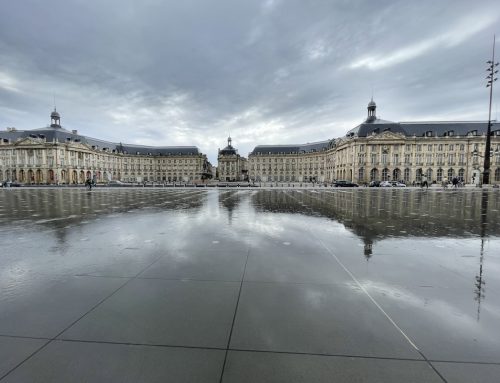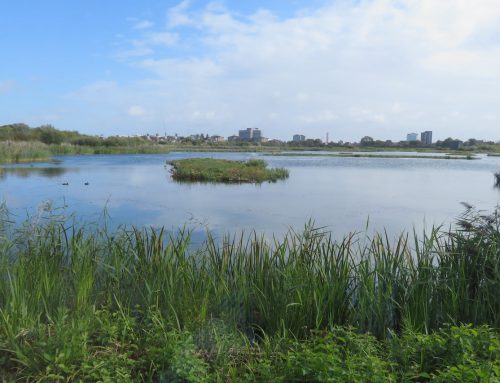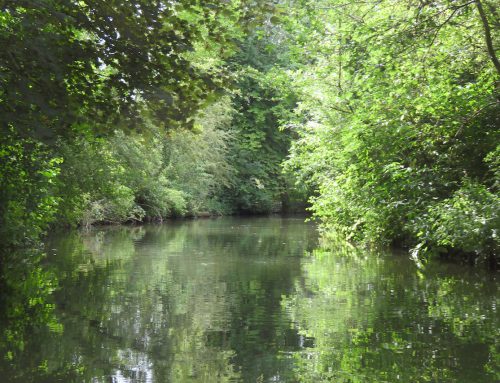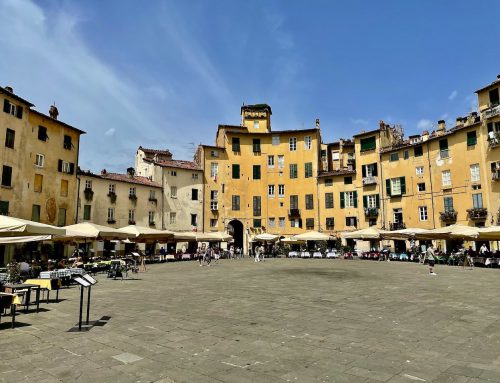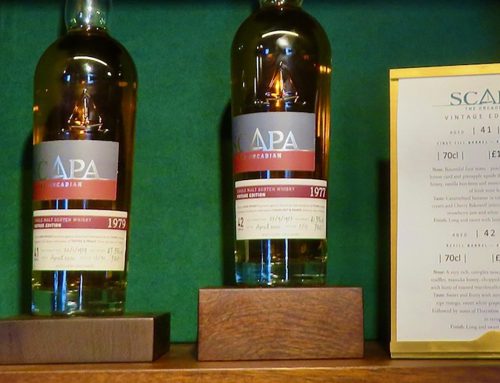Pondering on the Plateau
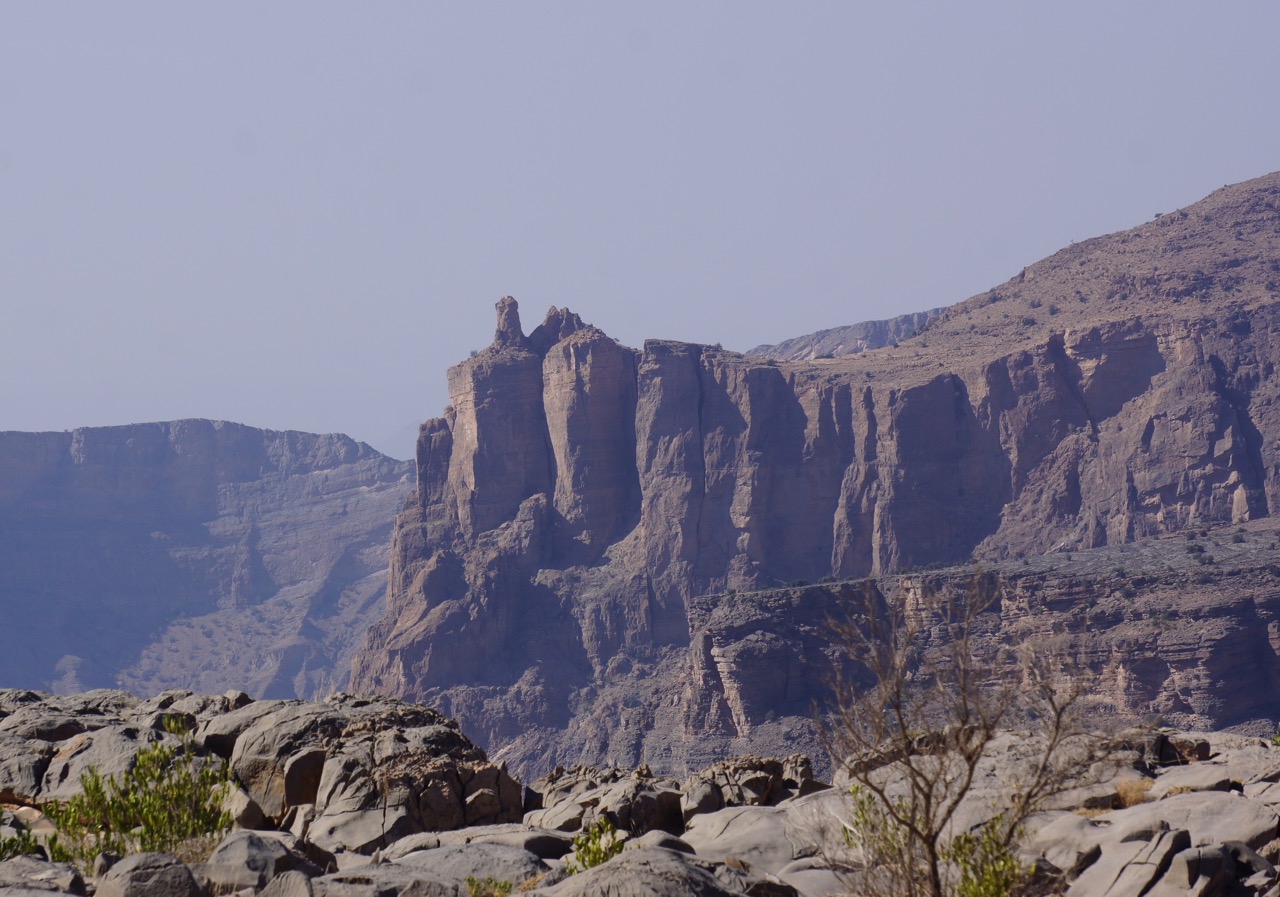
View from Diana's Point. Definitely a sight for pondering.

View from Diana's Point. Definitely a sight for pondering.
Jebel Akhdar, Oman
It is, or rather was, 1986. I was Heaven knows where and Lady Di was sat atop an Omani mountain. Prince Charles was apparently painting while she was taking in the view. They had been married five years. Their chosen spot was the Saiq Plateau of the Jebel Akhdar, 2000 metres above sea level. That is exactly where I find myself now. I may feel at the top of the world but even the Saiq Plateau is low when the highest mountain of the range, Jebel Shams, rockets up to 3000 metres. The royals, and forgive my insubordination, had cheated somewhat as they had reached the spot by helicopter. I had to reach it by road.
The problem with the Jebel Akhdar is the colour. The words mean “Green Mountain” in Arabic but the place is as far from green as it gets. It is rocky, yes, thanks to mainly limestone. It is remote, too, and definitely very scenic. But green? Not a hope, apart from the odd bush that the local goats have spared. Yet in this region of the world famed for dunes, deserts and camels, there is something about the Jebel Akhdar that is definitely unique.
Lady Di clearly thought the same, pondering on the plateau for several hours before flying back to where she had started. One can only guess what was on her mind. However, since 1986 her landing spot has been called Diana’s Point. It remained perfectly remote until…well until someone built a hotel.
I normally disapprove of hotels being built in beauty spots. Generally, it is hotel in and beauty out from the moment the new boy opens its doors. There is no doubting the beauty of Diana’s Point. Yet somehow this hotel, the one where I am staying right now, has pulled it off. This is the Anantara Al Jabal Al Akhdar, the hotel in the sky, very recently opened and trying hard to make its mark.
Mind you, I was having second, third and fourth thoughts as I drove here. Hairpin after hairpin with a Nissan engine straining in first gear and even then threatening to stall, my passenger praying with eyes screwed tight. Why had I failed to pack those ear defenders to keep out the whining noise? Whining from the engine, whining from my passenger and whining from the wind that streamed in my driver’s window and out the other side. Forget the air conditioning. It was simply too chilly. And going down? That was to come but when it did, oh dear. Descent was even worse, with plentiful escape routes for burnt-out brakes. The escape routes had seen clear and frequent use. No wonder the locals have a military checkpoint before you can enter the area. If you are not in a four-wheel drive, forget it. You are going nowhere and will need to be collected by the hotel in the sky.
For a long time, the Jebel Akhdar was a rebel base that allowed easy access to Oman’s interior, yet permitted the rebels to exist in reasonable safety. Wilfred Thesiger made it here in 1950, then an employee of the Desert Locust Research Organisation. I never associate Oman with locusts but they do actually exist. Yemen does not only send gun-toting warriors across the border to its neighbour, it sends insects, too. Astonishingly, a desert locust can lay 300 eggs at a time and travel up to 200 kilometres in a day; a serious traveller that puts my own air miles to shame. Thesiger knew of the danger of locusts in 1950 and the Omanis know that today. The pest must be taken seriously in the Middle East, especially if there is any chance of meagre crops surviving.
Sadly, Lady Di is no longer around to ask, but as she sat on the Saiq Plateau looking at the scenery, I wonder if she really knew the history? Maybe she knew about locusts; I have no idea. But had someone told her of the secret wars waged by her country and directly within her field of view? The Jebel Akhdar had been the scene of one of Britain’s many small wars, as well as the home of a crashed Venom fighter-bomber that broke into a thousand pieces in 1958. Its pilot, Flight Lieutenant Owen Watkinson, was instantly killed. He was at the time based in Sharjah and formed part of the so-called Operation Black Magic. This was a protracted air blockade of rebel strongholds on the Jebel Akhdar. To this day no one knows why he crashed as the bullet holes in the wreckage are said to have been placed there after the event. Yet whatever the reason, Owen Watkinson did not return to base that day and the Jebel Akhdar remains his final resting place. The locals continue to refuse any attempt at repatriation. Owen Watkinson has become part of their history.
His fate was sealed thanks to the then ruler of Oman, Sultan Said bin Taimur, based in Muscat. The Sultan’s family appears to have been dysfunctional as his brother controlled the rebels in the Jebel Akhdar but no one had been able to clear them. Enter Great Britain, at Said bin Taimur’s request. Help was agreed and a plan was hatched to send 4000 men to settle the problem. That is a lot of soldiers, so unsurprisingly the suggestion was seen as politically impossible. What next? The SAS, of course, who with 64 men climbed the southern side of the Jebel Akhdar, surprised the rebels and the deed was done. Each SAS soldier carried 54 kilogrammes of equipment and yet somehow they did the job. Fifty-four kilogrammes is the same as 2700 sushis, 90 pairs of shoes, or 108 baby kittens, if you must know. The mountains had last been conquered 2000 years earlier but the SAS did it again in 1959. Two were killed and a third injured when a sniper’s bullet exploded a grenade in an SAS soldier’s pack. Despite the loss and despite the military success of this unique operation, not a word is mentioned at the Sultan’s Armed Forces Museum in Muscat about it. It was as if the SAS had never happened, nor existed.
Said bin Taimur had an only son, Qaboos bin Said al Said, who eventually deposed his dad thanks, yet again, to the British SAS. Said bin Taimur eventually died in London, in 1972. I have yet to work out how the British started off by supporting the father in the 1950s and ended up by supporting the son against him 20 years later. No doubt there is logic in Whitehall. The result was the modern day Sultan Qaboos, leader of Oman and one of the planet’s most exemplary leaders.
So for the British, the Jebel Akhdar is a troubled spot. It may have appeared beautiful to Lady Di in August 1986, it may have appeared scenic to me 20 years later, and it is certainly good for pondering. But it is chilly, too, although what else can you expect of a mountain-top retreat? A sweater is most definitely de rigueur.
Yet the hotel is immaculate. Forget that they booked me a twin room rather than double. Forget the hugest spider in the bath. Forget the noisy Arab party in the room next door. This was five-star luxury delivered by a team that was more than keen to make the best impression. The room was changed, the noise next door soon abated, and the spider, admittedly after much Googling, was voted non-venomous and remained stationary, as if standing guard. He, I guess it was a he as boy and girl spiders do exist, probably explained why the mosquito count of my room was negligible.
There is a viewpoint now, plus an Italian restaurant, positioned precisely where Lady Di sat and her husband painted. Incongruous? Actually no. You can sense something of the occasion and it is definitely good for a ponder.
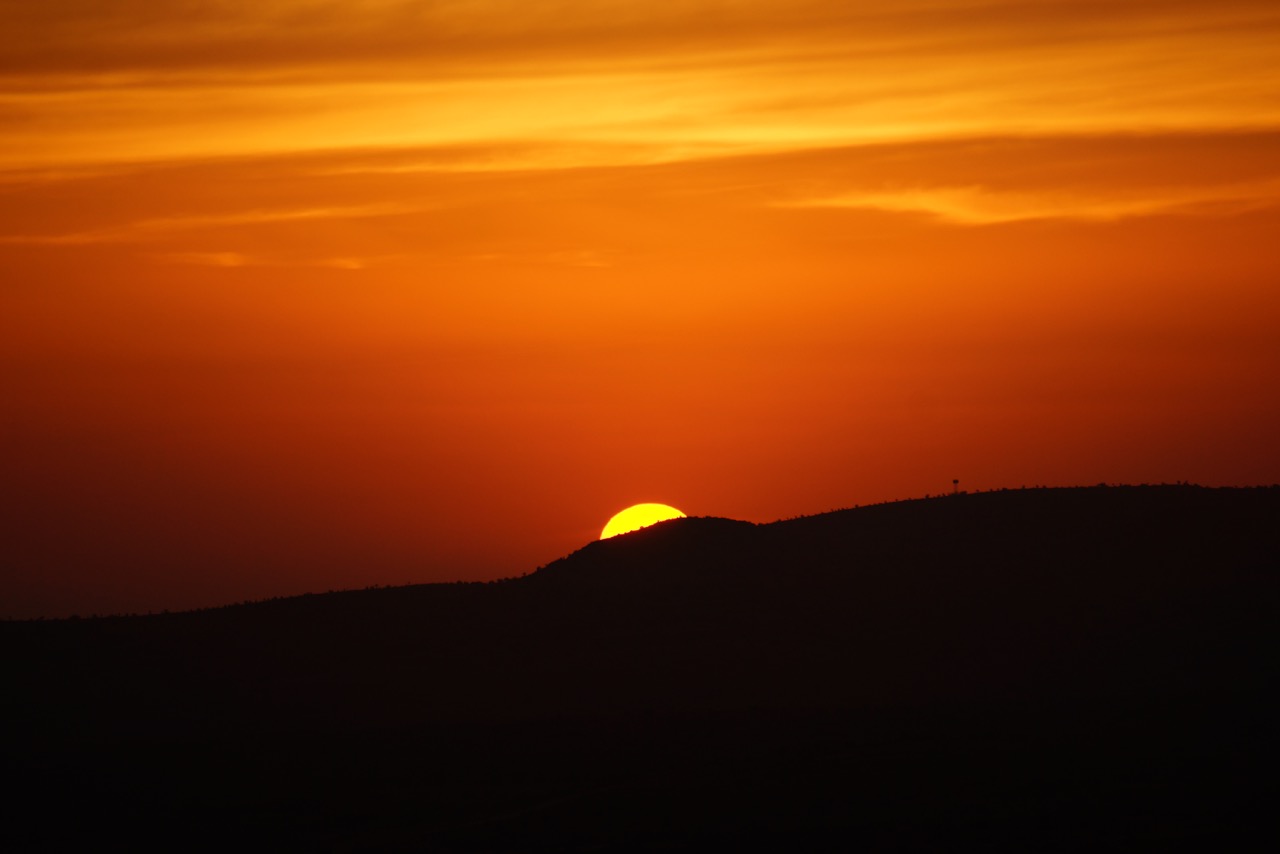
Sunset over the Jebel Akhdar. Sadly Lady Di would not have seen this.
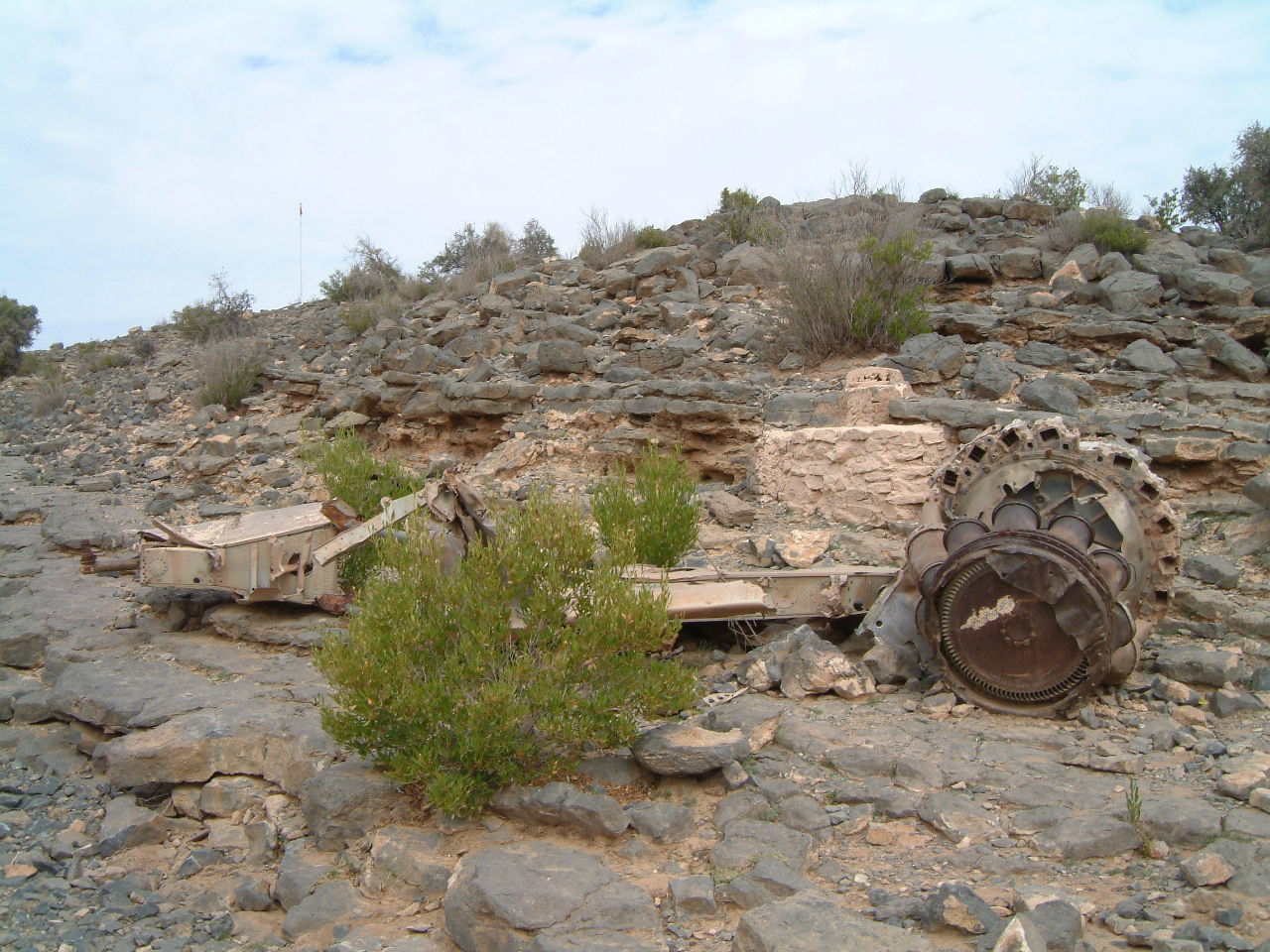
British combat aircraft wreckage on the Jebel Akhdar. It has not always been a joyous place.


